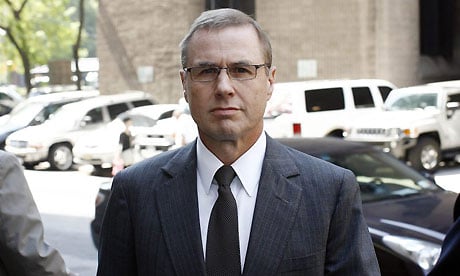Take a peek inside the frazzled mind of a major-league hitter these days. It isn’t a pretty sight.
Pitchers are throwing harder than ever. Batters are striking out more often than ever. And their judgment is getting shakier: Hitters are chasing more pitches outside the strike zone.
It is enough to make some teams wonder: What if we could just rewire hitters’ brains to react to pitches better? As it turns out, at least three major-league teams are engaged in a covert science experiment to find out.
Several years ago, the Boston Red Sox began working with a Massachusetts neuroscience company called NeuroScouting. The objective was to develop software that could improve hitters’ ability to recognize pitch types and decide, with greater speed and accuracy, whether they should swing. The result was a series of no-frills video games that became a required part of hitters’ pregame routines in the minor leagues.
When Theo Epstein left his job as general manager of the Red Sox to become president of baseball operations for the Chicago Cubs in 2011, he brought the same methods to Chicago’s farm system. And last year, the Tampa Bay Rays made the neurological training games mandatory for minor leaguers—threatening to fine those that didn’t complete their assignments.
Now, a startup company with a near-identical name says it is in talks with four other major-league teams about providing tests to evaluate the neurological strengths and weaknesses of their minor-league hitters. The company, Neuroscout, would put electrode caps on players to measure their relevant brain activity during computer simulations of pitches coming at them.
Red Sox general manager Ben Cherington said the idea is to improve the connection in hitters’ brains between the visual stimulus of a pitch and the decision of whether to swing. “There’s a connection there,” he said. “And if you’re trying to hit a baseball moving at 90 miles per hour and moving in different directions, it probably helps for that connection to be strong.”
Though NeuroScouting’s games vary, most of them depict a ball coming from the pitcher’s mound toward the hitter. Using a laptop or tablet, players are given instructions such as, “Hit the space bar when you see the seams on the ball spinning vertically,” and are scored based on their reaction time and accuracy. The Rays have a leaderboard that shows players which of their teammates fared best on a given drill, like the high-scores screen at the end of an arcade game.
NeuroScouting executives declined to go into detail about their methods or their clients, citing teams’ demand for confidentiality. But Wesley Clapp, one of the company’s co-founders, said their software can identify how well each player’s brain reacts to specific pitch types—an outside curveball or a low fastball, for instance—and tailor their training to the areas where they need to improve the most.
“The best players have the best neural skills,” Clapp said. “It’s like a dimmer switch. The more you turn that dimmer up, you see more and more impact on the field.”
The need for hitters to react faster is clear. The average major-league fastball this year is 91.8 mph, according to the statistics website FanGraphs, a figure that has steadily increased from 89.9 in 2002. Hitters’ decision-making is slumping, too. They have swung at 30% of pitches outside the strike zone this season, according to pitch-tracking data, up from 27.9% in 2009.
But players are divided on the benefits of brain games that, for many, feel more like homework than baseball.
“For the most part, guys just seem like, every other day, ‘Ugh, I have to do this again,’ ” Rays outfielder Kevin Kiermaier said. “You try to get in a routine, and it’s like, ‘Oh, you have to do neuroscience or you’re going to get fined.’ ” He said that fines for players who skipped their assigned videogames were in the $25 to $50 range. Rays general manager Andrew Friedman declined to comment.
In the majors, where players have more autonomy, few choose to continue with the games. “People didn’t have that stuff 10 years ago. People could still hit,” Rays outfielder Wil Myers said. “Don’t try to reinvent the game.”
Nonetheless, teams’ interest in the neuroscience of hitting is only growing. What began as a training tool for the Red Sox has also become a scouting device. Before each amateur draft, the Red Sox assess hitting prospects in part based on how well they score on the NeuroScouting games.
Mookie Betts, Boston’s fifth-round draft pick in 2011, recalled meeting with a Red Sox scout in an empty classroom one day during his lunch period at a Tennessee high school. At the scout’s request, he completed a series of games on a laptop. “I was thinking, ‘What does this have to do with baseball?’ ” Betts said. “I guess I did pretty well, since he kept on pursuing me.”
Betts, 21, said the daily NeuroScouting drills he did in the minors helped put him on a fast track to the majors. “It gets your brain going,” he said. In 43 games through Thursday, his .363 on-base percentage ranked second among major-league rookies behind Chicago White Sox star Jose Abreu.
Teams still aren’t sure if any of this will boost their offense. The Red Sox have seen hitters such as Betts rate well on the neuro tests and blossom into productive players. But Cherington said other prospects have scored well and not panned out.
Likewise, Rays catcher Curt Casali said his hitting improved after the team introduced NeuroScouting while he was still in the minors last year, but has no idea if one had anything to do with the other. “You could just be a really good hitter,” Casali said.
The only thing teams know for sure is offense continues to fall. The major-league batting average is .251, which would be the lowest for a single season since 1972, the year before the American League introduced the designated hitter. The leaguewide strikeout total is on pace to reach an all-time high for the seventh consecutive year.
At this point, they don’t need to know an experiment will work. The fact that it might is enough. “Intuitively, it would make sense that this would be a helpful tool,” Cherington said, “but I just don’t know if anyone yet can prove that it’s predictive. The hope is maybe it can be.”
This type of “psych” article is exactly why I pursue so many behavioral experts for my podcast.



